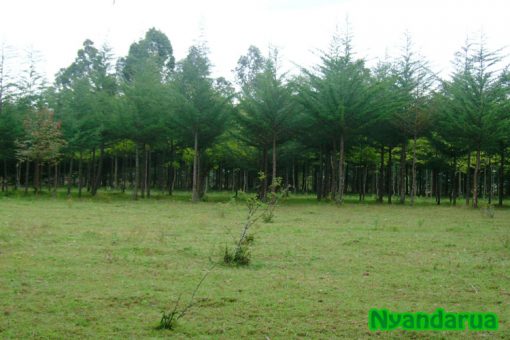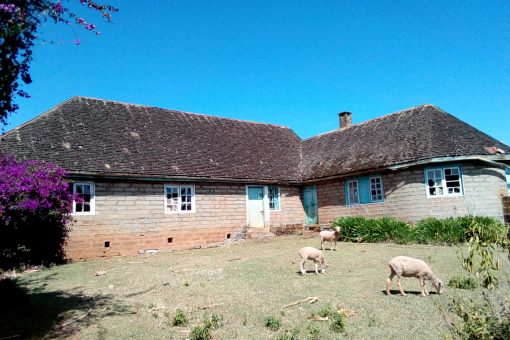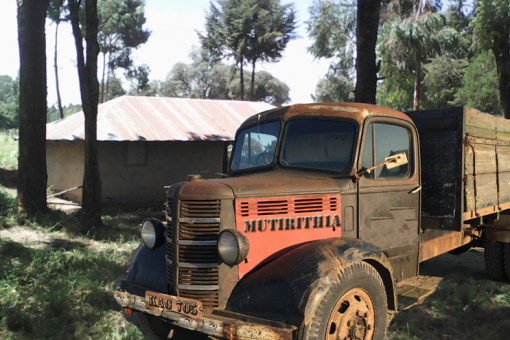After spending several years in the market, braving the hot sun, dust, wind gusts and mud that made the market look like a cow shed (gicheegu), Jirada opened the first Bata Shoe Shop in OlKalou. Talk of moving on up. The Bata Shop was in the “upscale” Kwa Uhindi side of town. It was two shops away from the Gachogu Clothes shop, where Mr. Ng’atho also designed our apparel on the veranda outside the shop.
The Bata shop was like nothing we had ever seen before. Its signature colors were light blue and white, the Internationally recognizable colors of the Bata Shoe Company. We did not know that back then, we thought this was Jirada’s interior decor for her brand new shop. The shop looked so clean, it was almost intimidating to enter there with our muddy or dusty shoes. The shoes were beautifully displayed under glass counters: they looked surreal. The shelves that lined the three walls of the shop were packed with individual blue and white boxes full of shoes.
Jirada sat behind the huge glass counters, only standing up to greet customers with a warm smile. Most people who entered the shop were not really customers. They were mainly window shopping, curious to see what good shoes looked like.
My parents must have been so pleased to have a pal from the market now selling shoes, right next to the family designer Mr. Ng’atho. Shoes were a very rare item to shop for. In most families, shoes fell under the category of luxuries that one could do without. They were not considered a need. In my family, shoes were mainly a gift item. When we did well in school, we got shoes. We also got shoes and new clothes for Christmas. When it was time for us to get shoes, we fantasized the style we hoped to get.
Bata was known for its genuine leather shoes (Iratu cia ngothi). Those were mainly a requirement for High school uniform. Primary schools never asked for shoes, most students went bare feet. The few who wore shoes to school, ended up removing them because they were either too muddy from the long walk to school or they inhibited their movement while playing with other kids. In a game of soccer, those with shoes were called upon by their team to use their shoes as goal markers. The fields were open with no sports infrastructure like goal posts built on them. It was up to the students to get creative and mark their own goal posts if they wanted to play a game of soccer. That is when the shoes came in handy, acting as temporary markers for the goal posts, and their owners grabbed and wore them after the game. You can imagine the condition of the feet after playing a rough and tumble game on a grassy, sometimes muddy or dusty field bare feet. Yet, it was easier to put on the shoes, regardless of how dirty the feet were, as opposed to carrying them around the whole school day. That is why students, opted to go to school bare foot, even those whose parents could afford shoes. The shoes were almost an inconvenience.
The Bata Shop also sold the famous Safari Boot, mainly worn by older people. My father only wore Safari Boots, that is why we associated them with “old” people, old being anybody over 30 years old, according to us. Bata also had other beautifully designed leather shoes for working people, the kind of dress shoes normally worn with suits for both men and women.
Then there were the other category of shoes we called Rubber Shoes (Iratu cia rafa) There were Hockey, Bata Bullets and Bata Ngoma. And of course the good old flip flop slippers that we called Taritari.



